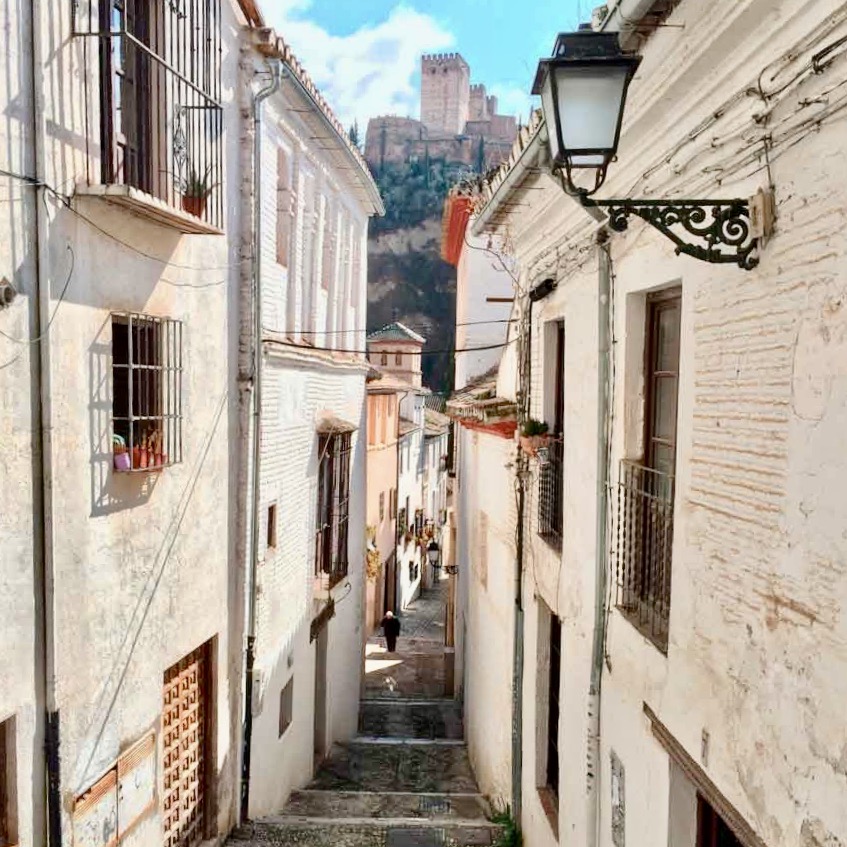
01 Feb Curious streets of Granada
Curious streets of Granada
This is a different article for the most curious minds.
In this article, you will find stories and curiosities from the streets of Granada. Popular stories and curious names that went down in history are popularly known.
The streets named in this article can be a different route to get to know little in-depth streets of Granada that are unnoticed.
The route runs through the streets of the oldest neighborhood in Granada, the Albaicín, the old Jewish quarter, the Realejo and the historic center.
All of these areas are a sample of the mix of cultures that existed in Granada in medieval times and that are still alive today with its people.
I hope you enjoy this trip to the past through the most curious streets of Granada.
Below you will find a map to help you find the streets.
Curious streets in the Albaicín
Agua de Albaicín (Albaicín water)
Situated between Plaza Larga and Calle Pagés, in the Albaicín.
Until a few decades ago, this street was labeled only Agua. There was an Arab bath called Baño del Albaicín.
This was the largest public bath in Granada and may have been built in the 13th century. It had a courtyard and a small water tank supplied with water from Aynadamar. Supplied with water from a natural spring called: Aynadamar.
In the center of this street and on the surface, water from the Aynadamar ditch circulated as the Andalusies sugarcane growers made it flow to irrigate the orchards and orchards.
It is currently one of the most commercial and picturesque streets in the Albaicín neighborhood.
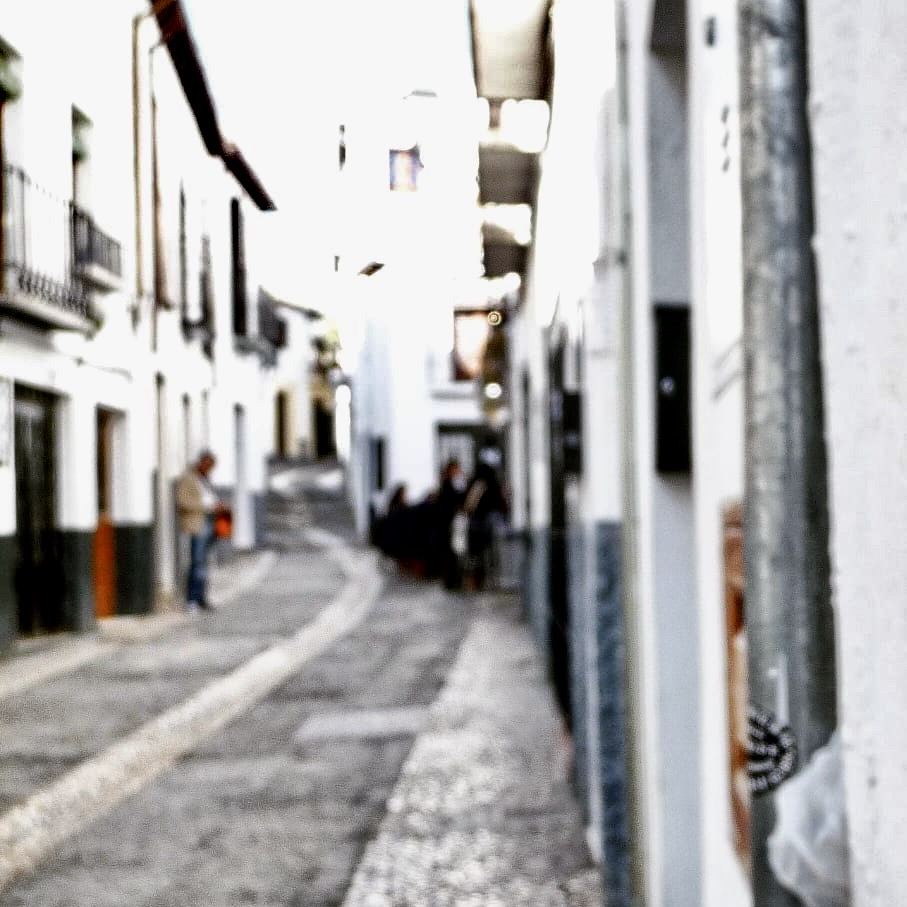
Arco de las Pesas (Arch of Weights)
Link between Placeta de las Minas and Plaza Larga, in the heart of Albaicín.
This is the Gate of the first Wall. It was called the Scales because of the iron contrasts hung from its frontage, a testament to the fraudulent weighing methods some merchants used to supply fewer goods than needed in a single transaction.
If they were caught off guard by the commune officials, in addition to the form of punishment that they were creditors of, they were also clearly erected on the wall to make fun of the trickster.
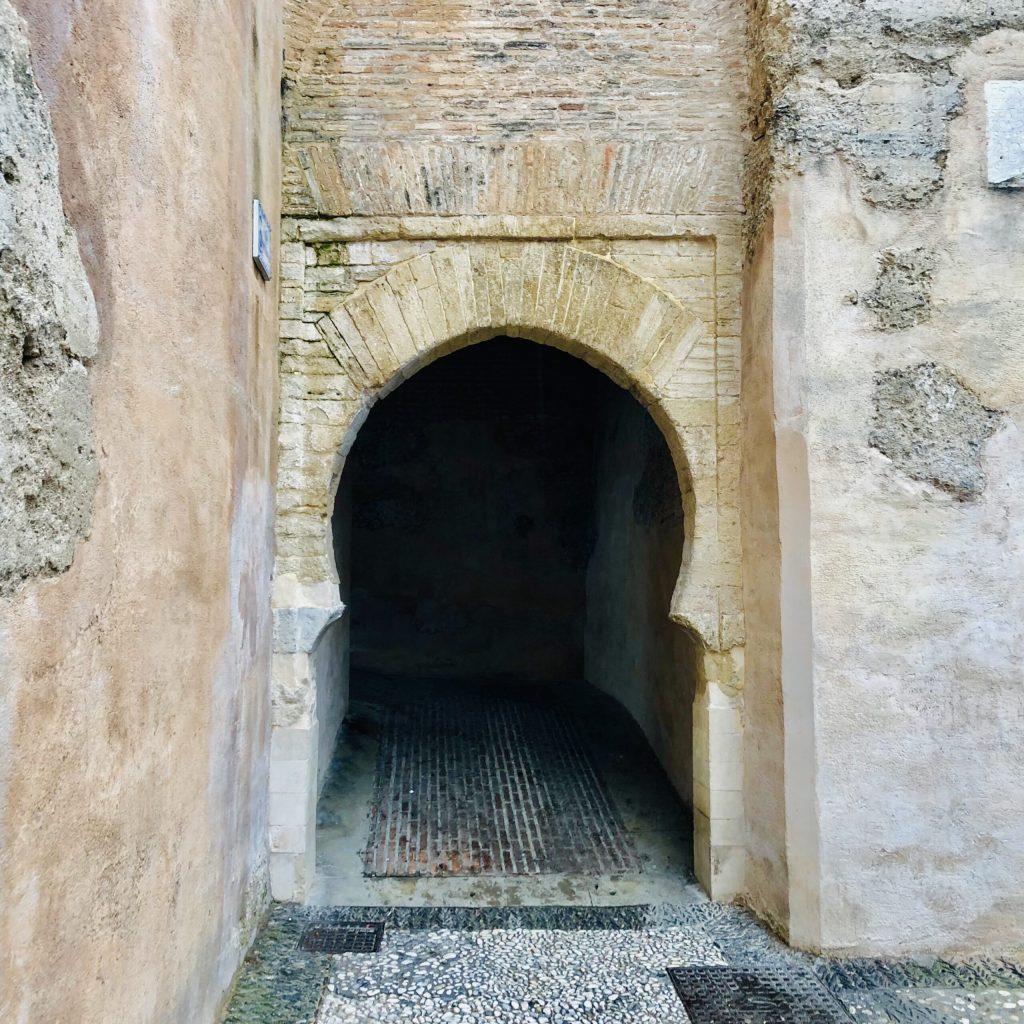
Aljibe de la Gitana (Gipsy’s cistern)
Between the squares Cristo de los Lirios de las Minas and adjacent to the María Miel street in Albaicín.
At the highest part of the confluence with the Placeta de Minas, the Cistern Gitana had been located since year XI.
It bears the name of a legend that dates back to 1568, at the time of the Moorish revolt in the Alpujarras.
According to this legend, near the residence lived María, a gypsy, famous throughout Granada, who fell in love with the knight Alfonso Guzmán.
Maria is accused of having ties to insurgents looking for an uprising.
She was sentenced to the stake, and when the sentence was carried out, Alfonso saved her, but he was stabbed to death.
María Gitana, seeing her brave lover dead, tried to throw herself into the water and drown. Since then, the tank has been named Gitana.
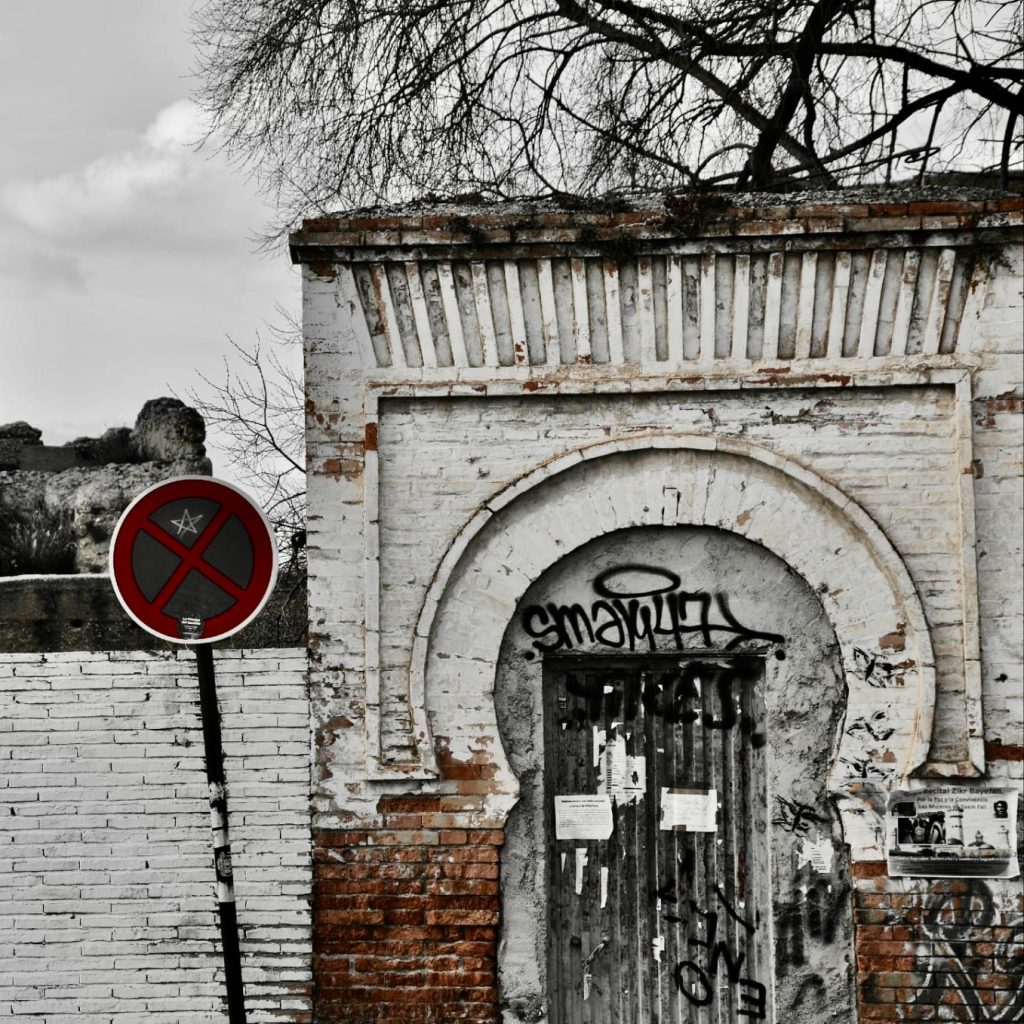
Perro Alta Cuesta (High Dog, Hill)
In the Albaicín neighborhood, between Placeta de San Gregorio and San José Cemetery.
It is not clear the reason for the name of the street.
The plausible version says that in one of the palaces that exist in the area, on the corner, there was a statue depicting the figure of a dog, through which threw water taken from the roofs of the canals.
It gave more than one surprise to passers-by, whom it soaked in abundance.
Curious streets in the Realejo
Ánimas (Souls)
Between Cuesta de Gomérez and Calle de los Cuchilleros, near Plaza Nueva.
The proximity of the convents in the zone allowed contact with the spirits.
People who were walking this street every day to attend to their different professionals were passing by this street feeling the presence of the souls.
That is the reason why popular language has transferred this situation of ‘’going soul’’ to this short urban road.
Colcha (Quilt)
Street situated in the city center, between Calle de los Reyes Católicos and Pavaneras.
There are many versions of which is the precedence of that name, but this is the most popular.
The narrow and beautiful street, which has seen countless processions pass, was decorated with very colorful embroidered quilts from a garment manufacturing industry in the street.
This industry was burned down in a fire that occurred in 1859, where two firefighters died during their work against the flames.
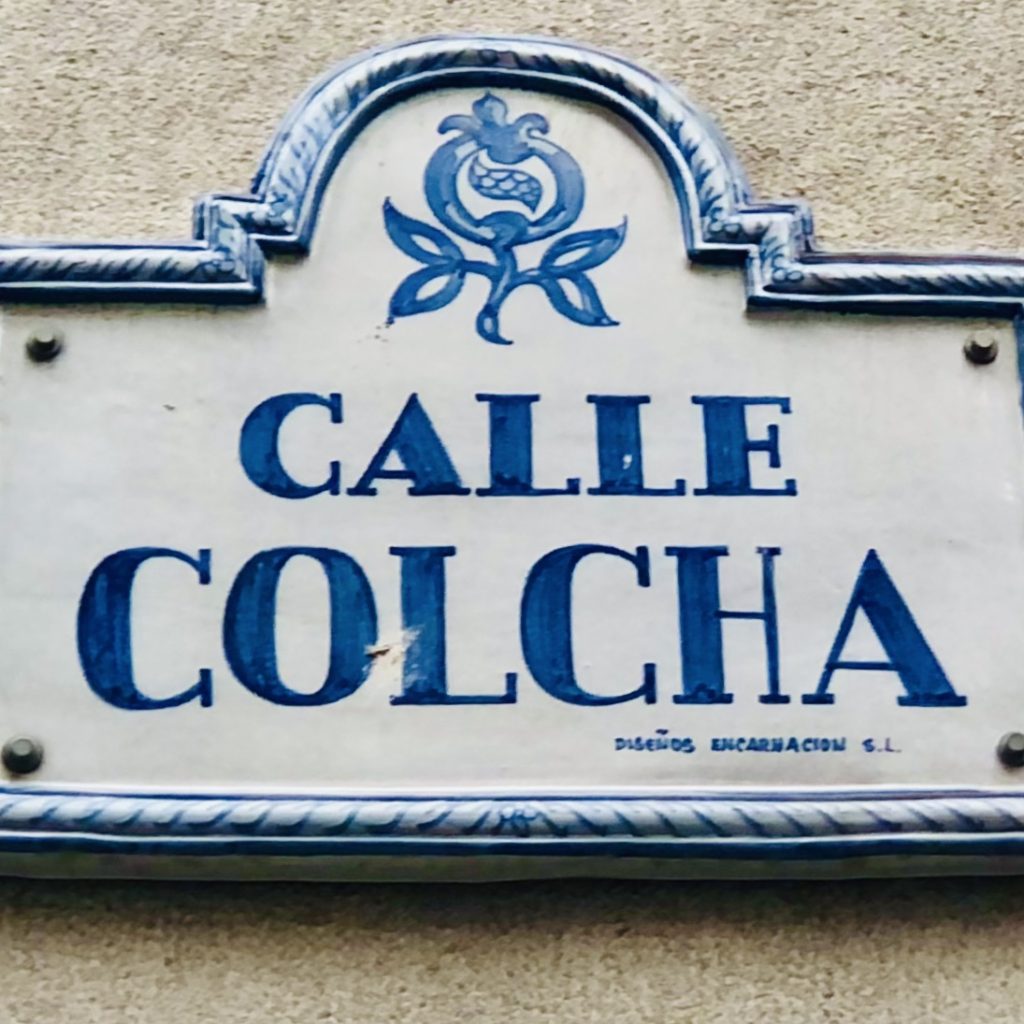
Pavaneras
In the center of the city, between the Isabel la Católica and Padre Suárez squares.
La Pavana was a dress for slaves worn by women, especially in the 19th century. There is a workshop located on this street, which is dedicated to the development of feminine jewelry hence the name.
On this central street, the aforementioned Father Suárez had his home on the precarious pavement, which is today the Historical Archives of the Royal Prime Minister’s Palace.
On the opposite sidewalk standed the Convent Church of San Francisco Casa Grande; its site was later converted to a palace.
The building is now the headquarters of the MA DOC or Ministry of Instruction and Doctrine, a body subordinate to the Army General Staff.
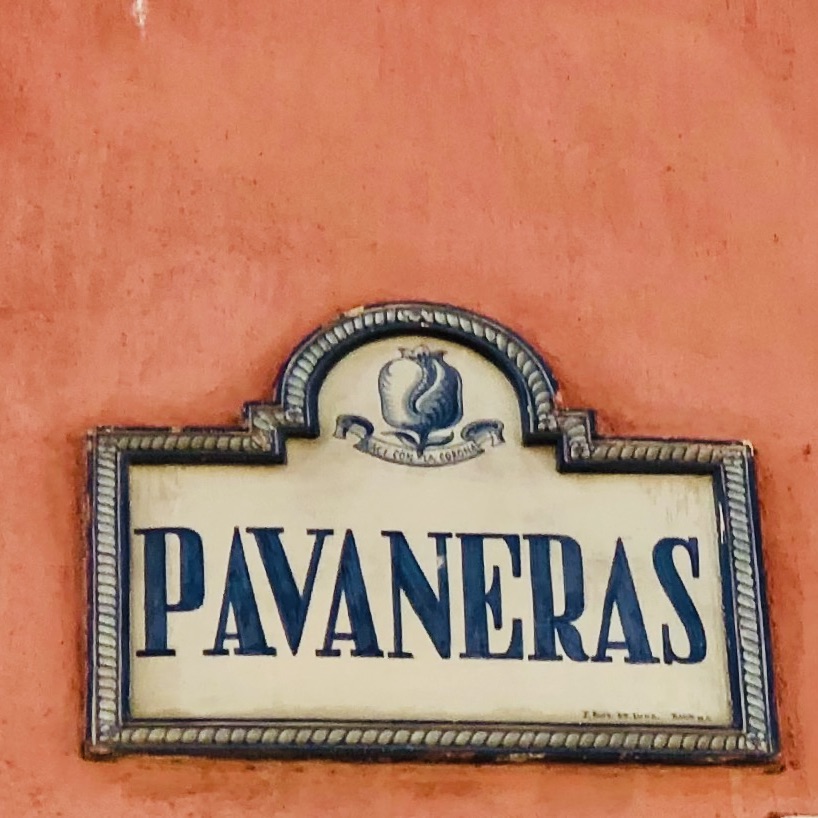
Curious streets in the City Center
Arco de las cucharas (Arch of the Spoons)
This arch is situated between Plaza Bibrambla and Calle Mesones, in the city’s heart.
In the wall section, next to the Bib alRamla gate, in 1519, a small gate was made to facilitate access to Mesons Street.
Thereafter, the Granada custom of calling each door of the wall an Arc derives from the name commented here.
In the commercial establishments on this street, wooden spoons was sold for household use hence the full name of the street.
Pie de la Torre (Foot of the Tower)
In the center of the city, between Plaza de las Pasiegas and Cárcel Baja.
This is one of the most famous street names in the city, and the name comes from the ancient custom of meeting at the foot of the church tower, a strategic and perfect spot.
This is one of the most logical and original street names; Its extension reaches only one-third of the main facade of the Mayor of church de Granada.
Until the beginning of the 20th century, people still regularly rang church bells as an alarm signal when a fire broke out.
If it happened at night, the bell-setter was advised by the watchman, who struck the ground with his cane of this short road, giving the number of knocks that corresponded to the church the fire had caught the beginning occurs.
Then, the same number of knocks were played to warn the people and the authorities.

Come to visit the most curious streets of Granada
Those were the most curious and popular streets of Granada with their traditional stories inside.
Granda is a city full of history, art and beautiful places to visit. Just come to walk into the heart of the city, you will be enjoying the city as a museum of history and art.
If you are a lover of history and art, Granada is a must on your list of cities to visit. Do not hesitate to visit this other article on my blog.
As a professional and official tourist guide of Granada I can show you the historical and artistic parts of the city.
With me, you can discover secrets of the city, histories, monuments, neighborhoods, and the lives of the most important historical characters.
To start your travel to Granada, here there is your first step.
*The information of this article is from the book ‘’Callejero emocional de Granada’’. Book awarded with the Francisco Izquierdo 2020 prize of the Academy of Good Letters of Granada
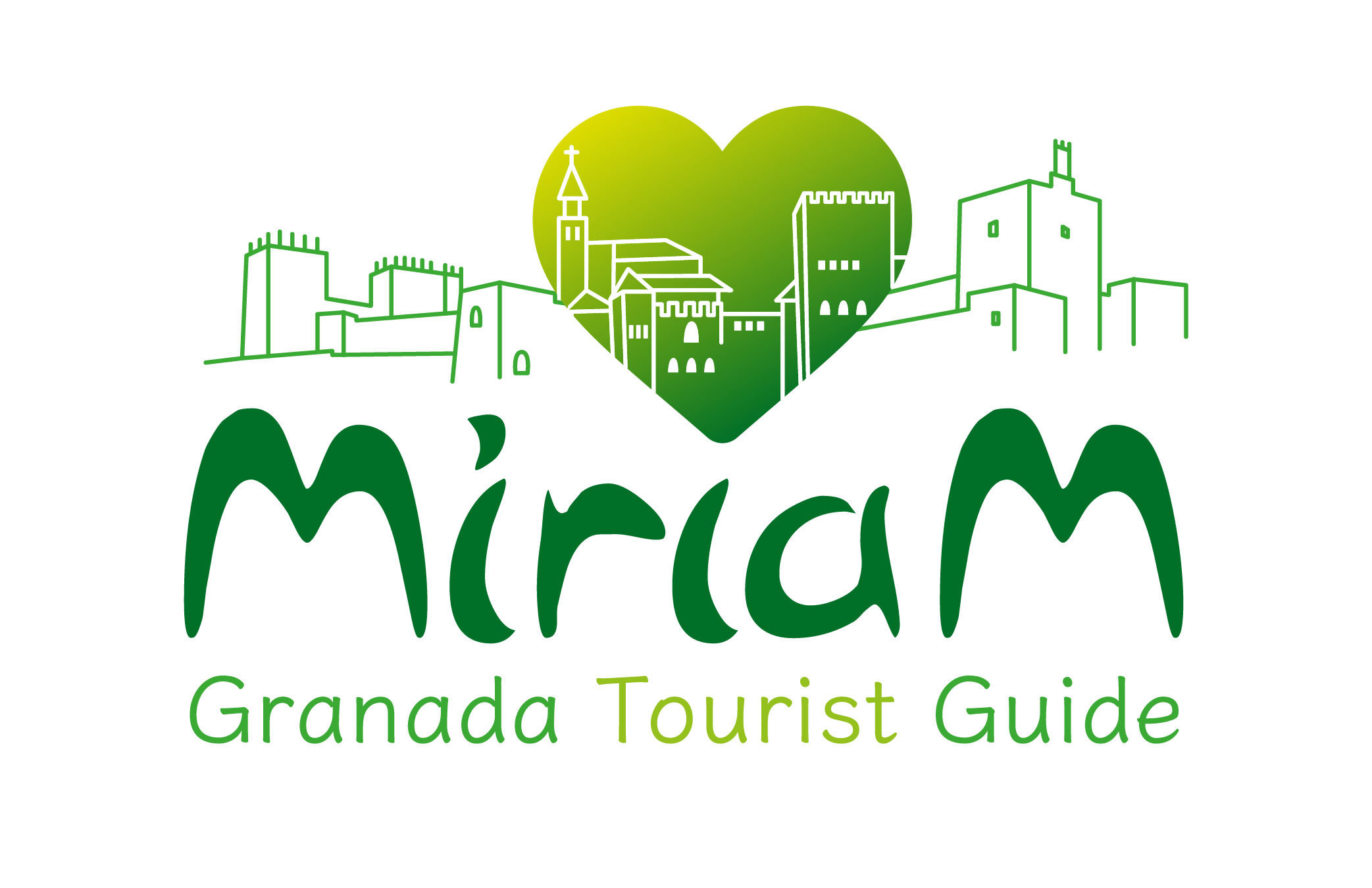


Sorry, the comment form is closed at this time.